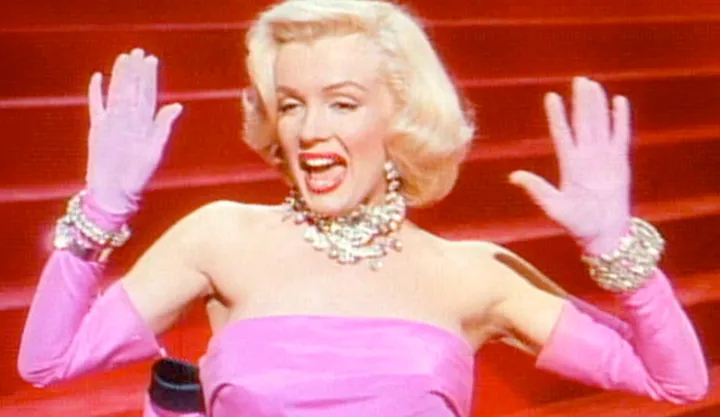Maverick Life
Marilyn Monroe and the invention of ‘sex’

On 5 August 1962, at her home in Brentwood, Los Angeles, Norma Jeane Mortenson was found dead. The autopsy revealed barbiturate poisoning and an apparent suicide. Fifty years on, we are still trying to figure out why this woman who invented the contemporary concept of “sex” took her own life. By KEVIN BLOOM.
Beyond feminism and gender equality and the political correctness that we in South Africa are as adept at exhibiting as any other country with a flawless Constitution, there lies a truth so self-evident that we no longer need to hold it up for scrutiny: sex sells. In fact, given how self-evident this truth now is, we should probably narrow it down to focus on a woman who died 50 years ago, and coin a more precise platitude: sex endures. Then again, seeing as we’re talking here about Marilyn Monroe, why not go all the way? Sex is truth.
Question is: what’s sex?
For millions of people worldwide, sex is not the necessary human function that bodily entwines a woman and a man in the service of procreation—as per the education manuals of a more chaste age, that is “sexual intercourse”. Neither is sex the act that takes place between a woman and a man (or a woman and a woman, or a man and a man, or any combination of the aforesaid in multiplied groupings) when procreation isn’t the aim—depending on the mood and the lighting, the correct nomenclature on this score runs the gamut from “making love” to “fucking”. Likewise, sex isn’t pornography, it isn’t masturbation, and it certainly isn’t a shopping spree (even if the latter is the endpoint of its fêted selling power).
Sex, then, must be this: the scene in The Seven Year Itch where Miss Monroe stands over a subway grating and her skirts blow up.
Norman Mailer, who never met Marilyn but who sat behind her once at Actor’s Studio, wrote three books about the screen goddess, the biggest-selling being Marilyn: A Biography (1973), and the most interesting being Of Women and Their Elegance (1980), wherein he tried to insinuate himself into the mind of his subject, and thereby approach the riddle of her limitless sex appeal. Set up as a faux-memoir in the voice of Marilyn herself, Mailer imagined the following about the immortal scene:
“Now I guess the studio had given me a white shmatte that night and tight white panties, and my hair had a hundred marcelled waves, and I certainly had no neck and lots of back and shoulders, where I was pleasantly plump, to say the least, but I paid no attention. I threw caution to the winds, which is one cliché I could die saying and hold it in my arms, I can’t help it, give me a ton of caution to throw to the winds. There were 2,000 people on the street, watching, and they had a million whistles.”
Mailer went further with his set piece, suggesting that Marilyn wanted to “immortalise immortality” by removing her panties and throwing them at the crowd. In an article for New York magazine, the author pre-empted the expected onslaught of indignation by staging a mock trial—during cross-examination, he had himself tell the prosecution that he came to such a conclusion after poring for “several years” over photographs of Marilyn taken by Milton Greene, and that rather than malign the actress, he’d intended to paint her as “charming” and humorous”.
Needless to say, Mailer’s clever trick didn’t stop the scandalised public from clawing at him anyway. Yet to look at Greene’s photos today is to agree with Mailer on at least one aspect of his defence: Marilyn was without a doubt a charming and humorous woman. As for the author’s attempt to shed some light on the source of her sexiness, he didn’t come within a million miles of the photographer he presumed to reference.
And maybe that’s just it—maybe “sexy” is not a term that can ever be adequately rendered in prose? After all, to re-watch The Seven Year Itch (1955) or Some Like it Hot (1959) is to know something about the human condition—for instance, the truth that we are all at our core sexual beings—that only the image can capture. Of course, maybe a writer with less of a reputation as a chauvinist than Norman Mailer would do a little better?
Enter Maureen Dowd, who on the occasion of the 50th anniversary of Marilyn’s death put this paragraph into her New York Times column: “Wherever I travel in the world, I run across the luminous image of the heart-breaking and breath-taking sex symbol who was smart enough to become the most famous ‘dumb blonde’ of the 20th century. Marilyn, her white pleated halter dress flying up over the New York subway grate, is as deeply etched in the global imagination as Audrey Hepburn in a black Givenchy dress at Tiffany’s.”
Doesn’t quite cut it either, does it? Still, Dowd did two things in her column on the weekend that moves us a little closer. First, she quoted her newspaper’s former managing editor who once gaped at Marilyn’s walk, saying of it that “it was as though she had a hundred body parts that moved separately in different directions” and that “you didn’t know what body part to follow.” Second, she employed the adjective “luminous,” which Jacqueline Rose, an infinitely more serious writer, had used and deconstructed with respect to Marilyn in the pages of the London Review of Books in April.
A trained and acclaimed psychoanalyst, Rose was interested in what Marilyn’s luminosity implied. She deftly peppered her essay with descriptive synonyms like “aura”, “glowed” and “lighting up” to show that Norma Jean was inimitable; ultimately incomparable to the “matt” beauties of the silver screen who were cast by audiences in the same category: Marlene Dietrich, Greta Garbo, Elizabeth Taylor. Rose was suggesting, obviously, that Marilyn’s beauty was more “dazzling” than it was classic. But what, she wanted to know, were men seeing when they were blinded by her on-screen presence?
In a phrase, wrote Rose, they were—and still are—seeing the “illusion of desire”. For the writer, the best example of this was in There’s No Business Like Show Business (1954), and specifically Marilyn’s rendition of Isaiah Berlin’s “After You Get What You Want,” wherein she sings, “After you get what you want you don’t want it.” It was a number that, as far as Rose was concerned, prefigured the sex symbol’s death.
As she noted: “Monroe herself was explicit about the ruthless sexual exploitation that accompanied her early days in Hollywood. In fact, we don’t need the abuse to pick up the deep discomfort behind Hollywood’s sexual glorification of Monroe, which she both hated and played to. Innocence and naturalness, the two qualities most commonly ascribed to her—I lose count of the number of times—should make us suspicious. Together they offer an image of sex without complexity, depth or pain, something that hovers above the human—which is why it is such a tease and also why, as others have pointed out, her image seems to have such an intimate proximity with death.”
Mailer could never have written something like that, mainly because for him sex was far more “life” than it was “death”—as a man who was married six times and fathered nine children, he was unapologetically proud of his own vitality and sexiness (which he saw as one and the same thing). But we should also remember that countless critics have credited Mailer as the writer who, more than any other, explained and delineated the modern concept of “celebrity”.
Meaning, he was as ill-equipped to perceive the tragedy in Marilyn’s short life as he was to perceive it in that old (yet still contemporary) advertising phrase: “sex sells”. DM
Read more:
- “Before the Literary Bar: In which the author puts his new Marilyn Monroe book on trial—before the critics do,” in New York magazine;
- “The Love Goddess Who Keeps Right on Seducing,” in the NYTimes;
- “A Rumbling of Things Unknown: Jacqueline Rose on Marilyn Monroe,” in the London Review of Books.
Photo: Marylin Monroe in Gentlemen prefer blondes.

















 Become an Insider
Become an Insider